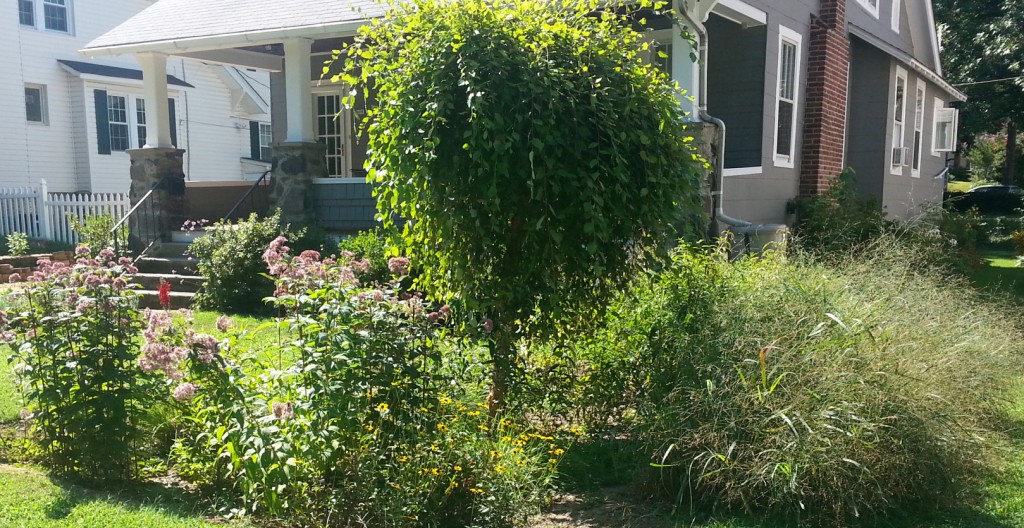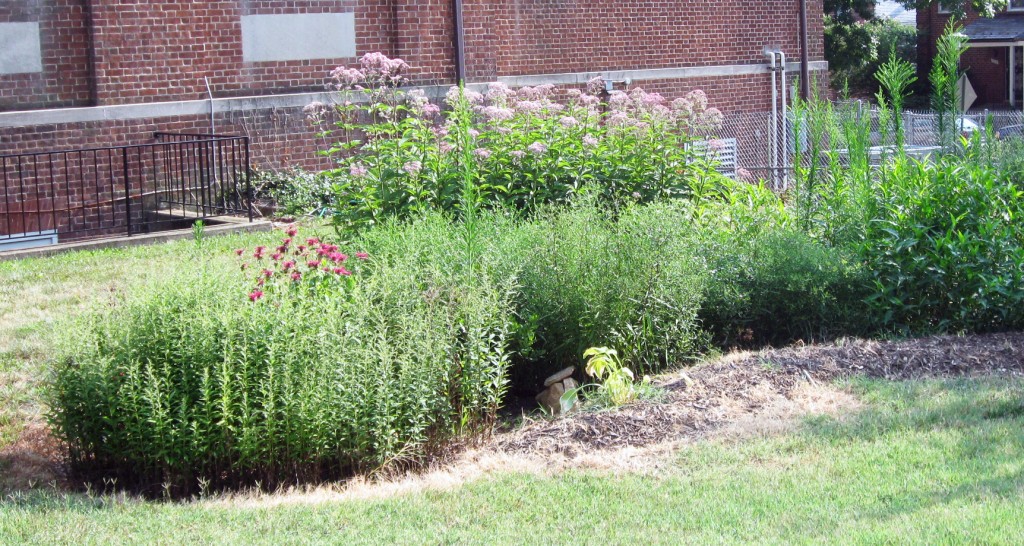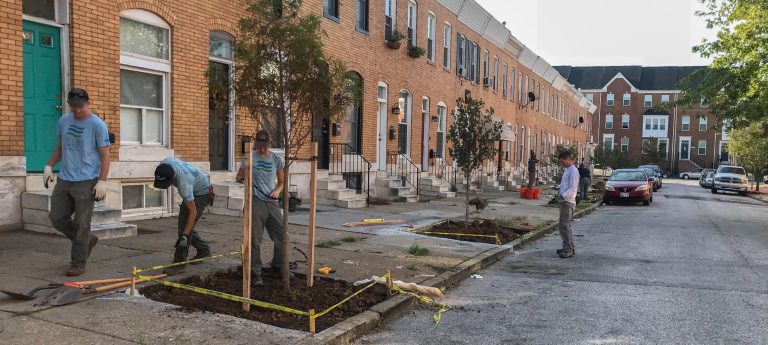How to Maintain a Healthy Rain Garden
You built and installed a beautiful and functional rain garden where the plants, soil, and mulch partner together to absorb and filter urban runoff! Alas, your work is not done. Similar to conventional landscaping rain gardens need some care and maintenance throughout the year. The good news is that maintaining a rain garden can be quite rewarding.
First and foremost take time and enjoy your rain garden! Installing a garden is a big deal, so sit back and enjoy it. With all the native plants installed you will soon have beneficial insects and pollinators visiting your yard.
Update Your Planting Plan
If you made any substitutions or changes to your planting plan, make notes. That way if you forget what is planted where you can look at your notes to easily identify it later. Keep in mind that your original rain garden design can be changed over time, as you see how the plants grow.
Observe Your Garden During Heavy Rain
There is nothing like watching your garden in action the first time and knowing that your runoff is no longer a pollution source, but rather a vital contributor to the plants and trees in your neighborhood. Observe where the water enters the rain garden, and where it overflows if it is a heavy rainfall. The mulch layer should stay in place. However if the mulch is washing away you will need to slow that water down at the garden inlet by adding more rocks. If the water is overflowing at a section where you did not intend then you will need to add more soil to that area. Repeat this activity twice a year going forward to ensure that the garden overflows properly.
Right plant — Right place
Over the coming seasons keep those plants happy. Even if you follow all the design guidelines, “right plant — right place,” and “an ounce of prevention is worth a pound of cure,” there may still be plants that simply do not thrive or even survive. For example, if all of your swamp milkweed looks terrible, don’t just buy more replace it with a different species. Likewise if your obedient plant is spreading like crazy, you may need to keep them in check by periodically weeding. Rain gardens will still work even if they have weeds growing in them, but your rain garden plants will not grow as well because weeds will compete with or overshadow them. When weeding make sure to remove the root, otherwise the weed could return.
Key Maintenance Tips
- Water regularly to promote plant growth especially during the first two years and dry spells.
- Inspect site following rainfall events. Add and or replace vegetation in any eroded areas.
- Prune and weed to maintain appearance.
- Replace mulch as needed.
- Soil fertilization is unnecessary as rain gardens are designed to absorb excess nutrients.
- Inspect the rain garden for dead or dying vegetation. Replace vegetation as needed.
Additional Resources
Have a rain garden problem that has you stumped? Give us a call at Blue Water Baltimore and we will come out to trouble shoot and offer advice. For additional details and directions on rain garden maintenance view our Routine Maintenance for Rain Gardens document.





